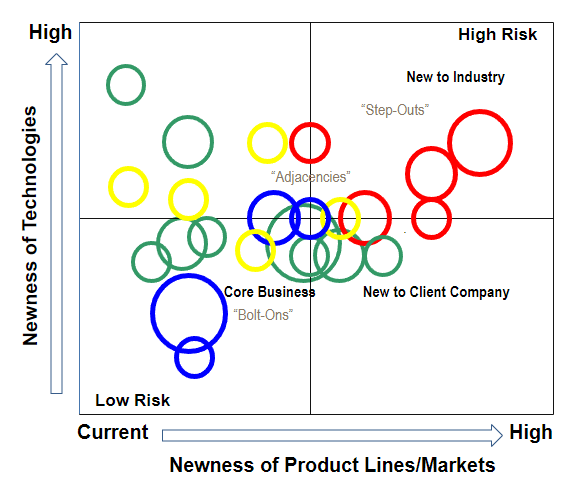![]()
Our Firm
CDI Global provides middle-market advisory with globalreaching success. Our commitment is to deliver worldclass service built on long-term client relationships. Our international reach and core values drive our history of successful cross-border transactions.
![]()
Why CDI?
CDI Global is a leading international middle-market advisory firm, specializing in strategic cross-border transactions.
![]()
History
Established in Brussels, Belgium in 1973, CDI Global was created to serve the middle market.
![]()
Leadership
CDI Global is known for our strong leadership, comprised of top industry professionals, entrepreneurs and financial experts across the world.
![]()
Locations
CDI Global has offices in more than 40 major financial centers in over 30 countries around the world.
![]()
Careers
Our firm is continually evolving and growing, and we are always interested in talented individuals looking to join our team.
![]()
Services
CDI Global is a leader in middle-market, cross-border transactions. Our international presence, industry expertise, and market command ensure our ability to help you reach your goals.
![]()
Mergers & Acquisitions
CDI Global has strategically advised companies on mergers and acquisitions (M&A) worldwide for almost 50 years.
![]()
Mergers
We provide guidance throughout the merger process, from identifying the right fit to addressing any specific challenges, ensuring our clients reach their strategic goals.
![]()
Acquisitions
CDI Global is highly experienced in helping our clients make acquisitions of other companies, both cross-border and cross-industry.
![]()
Cross-Border Transactions
CDI Global’s network of offices spans more than 30 countries, giving us competitive advantage in facilitating cross-border transactions.
![]()
Joint Ventures
In joint ventures, the right fit is key. CDI Global has the international reach and market expertise to find and negotiate strategic alliances.
![]()
Company Search
CDI Global provides the active and focused search needed to target acquisitions that fit your company objectives.
![]()
Transaction Support
CDI provides full-service mergers and acquisitions transaction support including valuations, due-diligence, and closing support.
![]()
Divestitures
CDI Global specializes in divestitures, generating successful exits for private owners, corporations, and private equity backed enterprises alike.
![]()
Divestiture Strategy
Our company partnerships and industry expertise are key in developing the best divestiture strategy for our clients.
![]()
Broad Auction
CDI Global has an extensive network of connections to ensure maximum exposure for broad auction bidding.
![]()
Limited Auction
Our middle-market expertise and industry knowledge delivers the optimal group of prospective and interested buyers to boost limited auction valuations.
![]()
Transaction Support
CDI Global provides both transaction support and due diligence while acting as project manager, so our clients can continue running their businesses.
![]()
Capital Raising
CDI Global’s extensive experience and relationships within the investment banking community ensure capital raising success.
![]()
Corporate Finance Advisory
Our corporate finance advisory planning and strategies come from decades of investment banking and industry CFO experience.
![]()
Growth Capital
We help you grow your company by facilitating access to growth capital and guiding you through strategic decisions during the capital raising process.
![]()
Recapitalizations
CDI Global guides you through strategic changes in your company’s capital structure and maximizes opportunities.
![]()
Management Buyout
We are highly experienced at guiding companies through the complex financing a management buyout (MBO) entails.
![]()
Leveraged Buyout
CDI Global’s extensive financial experience can facilitate a smooth leveraged buyout (LBO) with optimal term negotiations.
![]()
Representative Transactions
![]()
Industries
CDI Global comprises international advisory teams with mergers and acquisitions experience in many key industries.
![]()
Aerospace & Defence
Within the Aerospace and Defense Industry sector, CDI Global has experienced and dedicated partners who can identify and interview appropriate candidates on a face-to-face basis.
![]()
Automotive
The Automotive Industry forecast is still favorable due to the development of new technologies, spurring an increase of cross-border and cross-sector opportunities.
![]()
Chemicals
CDI Global’s knowledge and experience in the Chemicals Industry sector includes coatings, adhesives and sealants, polymers and resins, pharmaceuticals and fine chemicals, plastics, surfactants, as well many other product segments.
![]()
Energy, Utilities, Mining, Oil & Gas
CDI Global has completed many search-and-sell mandates in the Energy, Utilities and Mining, and Oil and Gas industries. Our global industry experts, as well as country partners in Asia, Europe, and America, constitute our base from which we compose our global search teams.
![]()
Fashion, Luxury and Beauty
The Fashion, Luxury and Beauty industry includes wearable fashion and retail accessories, as well as beauty products, fragrances, and personal care items. At CDI Global, our team of experts draw upon their decades of experience working across borders to consult and strategize the best available deals and entry points.
![]()
Financial Services
Our team of experts at CDI Global have decades of combined banking and Financial Institutions experience. This is key to delivering the best results from cross-border mergers and acquisitions as well as debt and equity transactions.
![]()
Food & Beverage
CDI Global has extensive knowledge of the dynamic and innovative changes occurring in the global Food and Beverage Industry and the insight to advise on complex M&A deals and fundraisings as well as provide comprehensive corporate financial services.
![]()
Healthcare, Pharma and Biotech
CDI Global has a proven track record of 80+ healthcare transactions closed by partners, including sell, buy, fund raising, joint ventures, and mergers and acquisitions in all segments and across the globe.
![]()
Consumer and Household Goods
Our CDI Global team brings decades of experience consulting on Consumer and Household Goods mergers and acquisitions. We understand how to navigate the ever-changing industry to uncover opportunities that match client objectives in this industry.
![]()
Industrial Manufacturing & Services
At CDI Global, our team provides years of experience in transactional execution in the Industrial Services sector. We understand the niche markets and channels, as well as the key global regions, to find and secure the best possible opportunities.
![]()
Infrastructure, Construction & Materials
At CDI Global, our professional team has local and global experience of the broad Infrastructure market and seeks to specifically explore those segments that lend themselves to cross border M&A.
![]()
Packaging
CDI Global’s team of Packaging experts and dealmakers have the experience to catch trends, account for shifting economic times, and discover new growth opportunities within the industry.
![]()
Retail
Our CDI Global team brings decades of experience consulting on Retail mergers and acquisitions. We understand how to navigate the ever-changing industry to discover key opportunities that match our clients’ goals in this sector.
![]()
Technology Media & Telecoms
CDI Global has years of experience in transactional execution among its international team members in the Technology, Media and Telecommunications industries. We understand the niche markets and channels, as well as the key global regions, to find and secure the best possible opportunities.
![]()
News / Insights
![]()
Contact Us
![]()
Resources
![]()
CDI Global Members
![]()
ESOP Financing
We can help you set up and take strategic advantage of ESOP financing benefits, both to the company and employees.
![]()
Partner Portal
![]()
Agriculture
CDI Global has extensive knowledge of the dynamic and innovative changes occurring in the global Agriculture Industry and the insight to advise on complex M&A deals and fundraisings as well as provide comprehensive corporate financial services.
![]()
Transport & Logistics
![]()
Preparation Advisory Service



















































